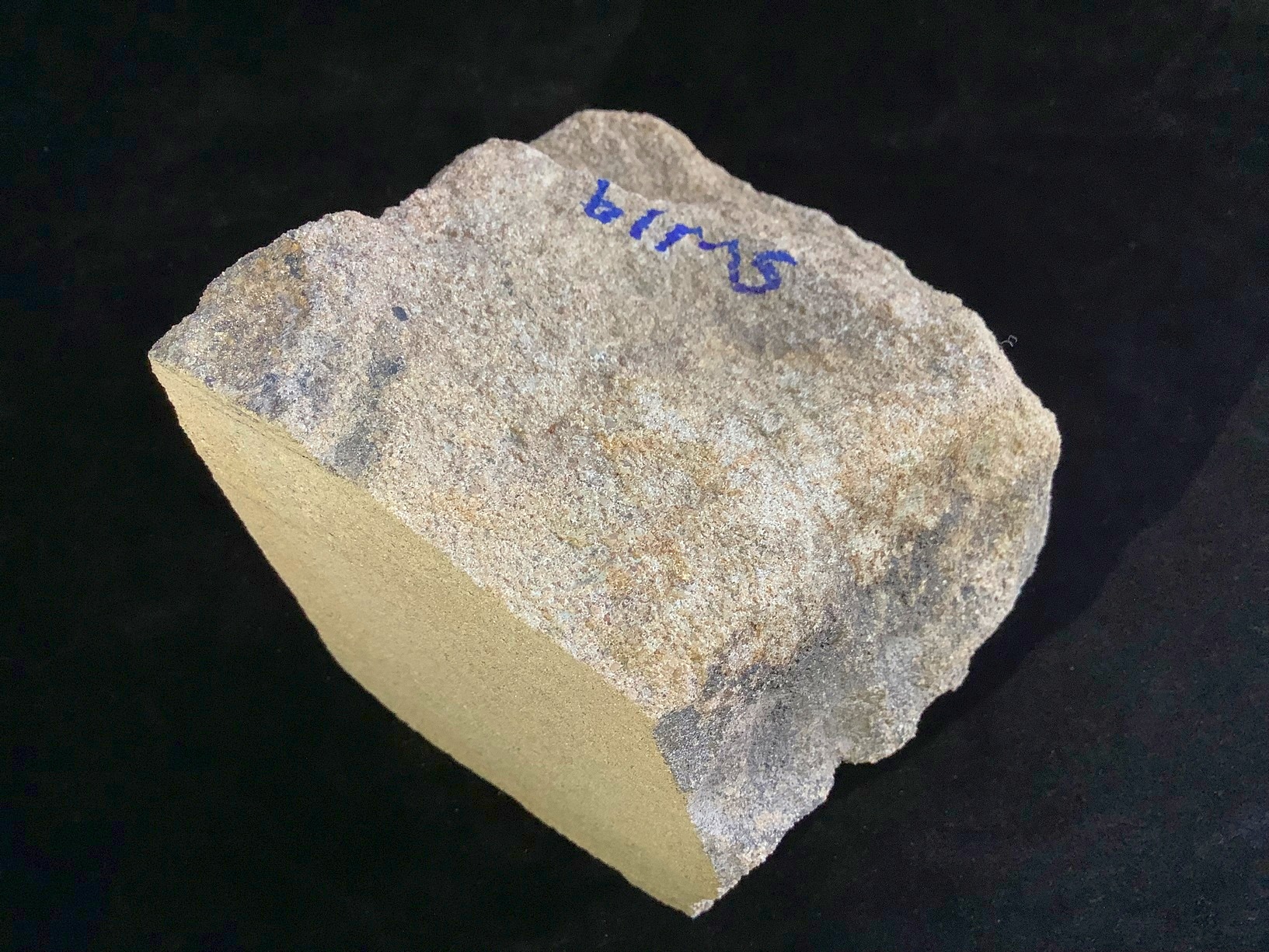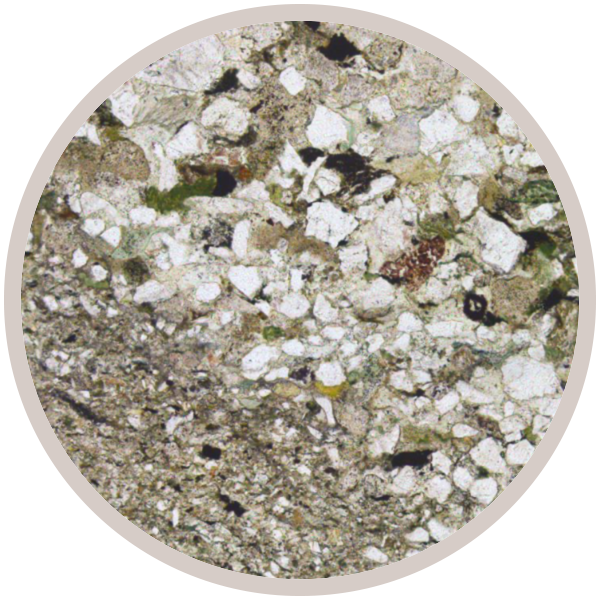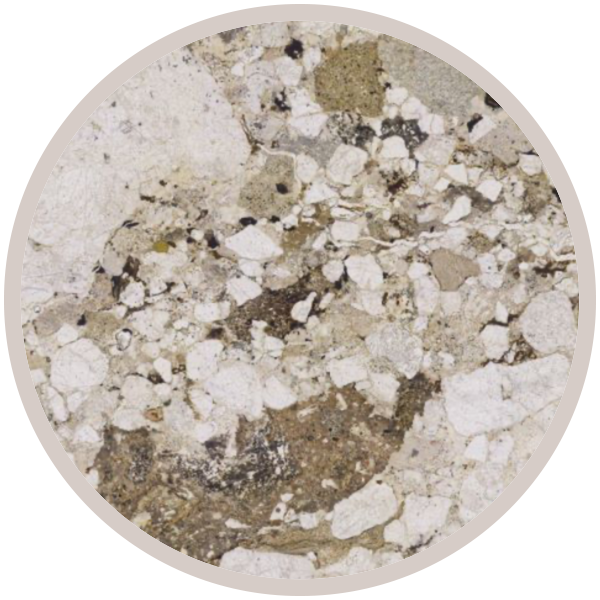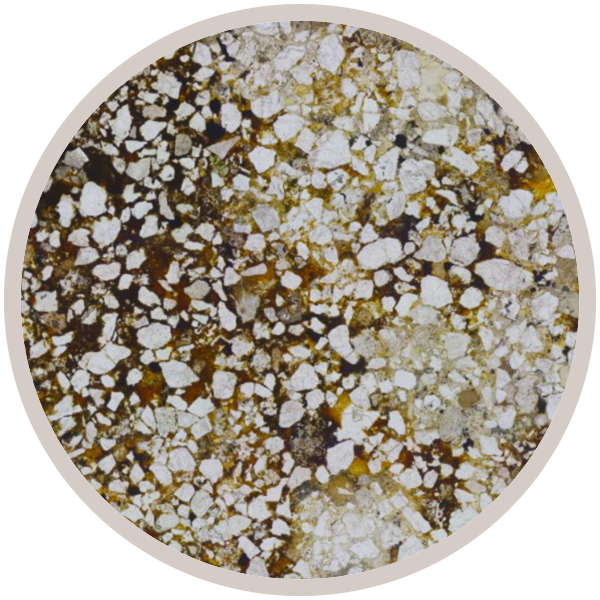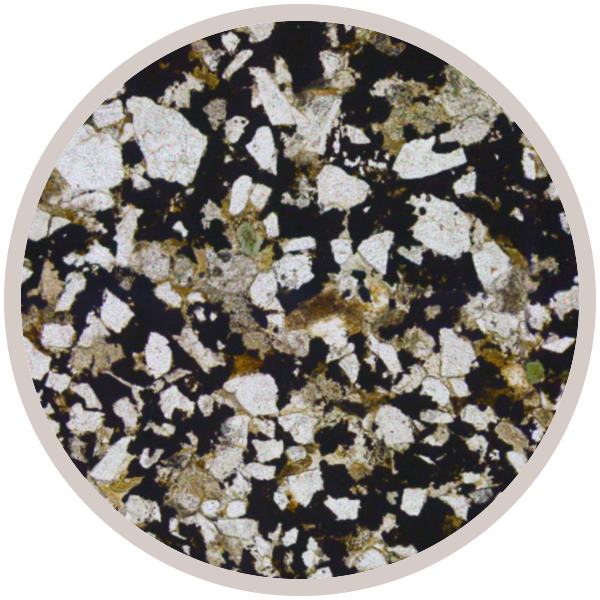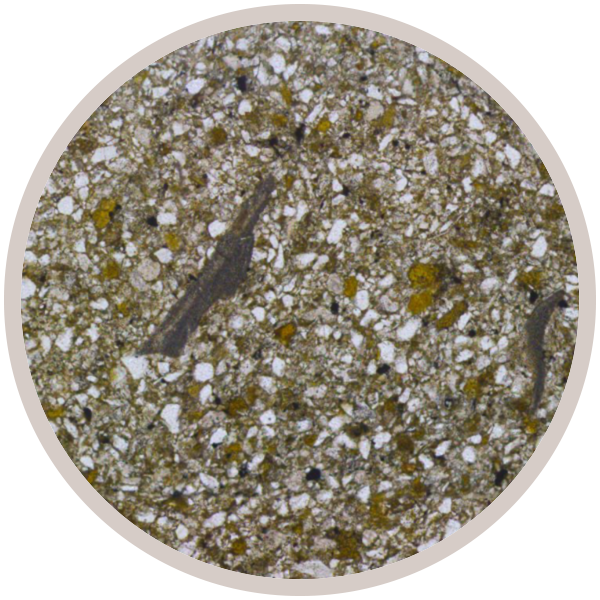
Fact sheet
A coarse Carboniferous sandstone, known as a 'gritstone', collected from Doulton's Claypit.
This gritstone was deposited in a low-lying, deltaic environment when the region lay near the equator. These deltas were thickly forested with trees whose fossil remains can be found in some of the strata.
In thin section, sedimentary bedding is fairly obscure but may run parallel to the short side of the section, as indicated by subtle variations in grainsize and the alignment of opaque or elongate fibrous material. The dark material may represent flattened organic matter, perhaps fragments of wood. The gritstone is not well-sorted and seems immature both texturally and compositionally. A wide variety of grains includes clear quartz, dusty feldspar, chlorite, opaque oxides and many lithic fragments from quartzites to brown or greenish mafic rock-types. Grains are subrounded to angular.
Fuzzy, pale brown or yellow interstitial material is likely fine grained clays and insoluble iron oxides, with several fibrous sheaves of pale green chlorite. Porosity also varies across the section, with pore spaces relatively common in some layers but sparse in others.
This sample was collected as part of the 'Macro to Micro' project.
This Collection showcases the geodiversity of a classic geological site: the Saltwells National Nature Reserve in the West Midlands.
As well as displaying thin section and hand specimen views along with information setting them in the context of their landscapes, we also include perspectives and creative responses to the geological heritage of the sites from the local community.
| Explore the stories of the rock layers at Saltwells and Wren's Nest NNRs, designed by students at King Edward VI School, Stourbridge: |
This Collection was made possible by funding awarded to the 'Macro to Micro' project by the Natural Environment Research Council (NERC) under their 'Growing Roots' scheme.
